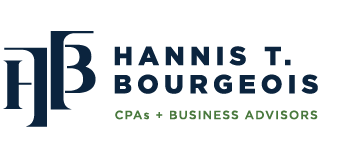Construction Economic Report
Executive Summary – July 2025
Big Items
Real GDP: The GDP roller coaster has been something to behold. The Q1 numbers fell apart at the end as tariff concerns prompted businesses to load up on imports before expected price hikes. Imports pull away from GDP (Gross DOMESTIC Product) and for a few weeks it looked as if the economy would sink into recession. Q2 reversed that trend as import volumes returned to normal or below. It currently stands around 2.4%. The concern is over Q3 as projections are as low as 1.3% based on dwindling activity on the part of business and the consumer. Construction is a key factor in all this as many projects have been delayed due to price uncertainty.
Raw Material Prices/Availability: No area has been as uncertain as commodity pricing as these have been subject to some extreme tariff threats. Steel and aluminum have seen tariff predictions that have ranged from 50% to 100% (over 100% from some nations). Now Copper has joined the list with the threat of 50% tariffs. There has been an unusual degree of instability as users of these commodities have lobbied hard (and often successfully) for exemptions on select grades or imports from select nations. Steel and aluminum tariffs are at 50% (up from 25%) and copper is expected to follow the same pattern unless there are cutouts and exemptions. The UK already has a deal that lowered the tariff to 25% for steel and aluminum.
Labor Situation / Labor Costs: The latest reading for the Employment Cost Index for construction was 166.9 and grew at a 2.9% annual rate (for those of you that set raises based on the ECI). There has been a bit of decline lately in the ECI as projects have been slowed by tariff induced uncertainty. There are many questions about the role of deportations but the evidence shows that most of those affected are in the low-skilled categories, government layoffs have had minimal impact on construction jobs and activity. The big issue is still an aging demographic and the impact of retirements. There were still 7.7 million jobs open across the country and over 6 million seeking work. The problem is that those seeking work lack the skills and training to take those open construction jobs.
Manufacturing: The latest data has the US reading in the Purchasing Managers’ Index was an improvement over the last month – going from 52.0 to 52.9. This puts the US ahead of most of the other nations in the index. Seventeen nations had readings in contraction territory (under 50) and nine of the 30 saw their readings decline. The Canadian reading was 45.6 and Mexico was 46.3, both were in deep contraction. Most of the Asian states are above 50 and most of Europe is under 50. The latest industrial production numbers are up but this has been attributed in part to efforts to beat those threatened August tariff hikes. The capacity utilization numbers have weakened somewhat and remain in the mid-70s (normal is still seen as between 80% and 85%)
Risks
Tariffs: This has begun to sound like a broken record (remember those?). Each month there seems to be a confident assertion that tariff policy will finally settle down but that never seems to happen as tariff negotiations have been about a lot more than economics. There have been talks regarding immigration rules, interdiction of fentanyl, Ukraine war and the Brazilian courts. It has resulted in wild confusion on tariff impact. Copper was not part of the conversation a few weeks ago but the administration wants to put pressure on Brazil – a copper exporter. Steel and aluminum still face tariffs of 50% but some nations have received an exemption. Most of the big tariff imposition has been put off to August but few think this will be the last adjustment.
The business community is also looking at the implications of the recently passed tax bill. There are some major tax breaks for projects. There is a provision for 100% expensing for “qualified production property”. This is aimed at non-residential development for manufacturing and production. The catch is that the projects must begin before January of 2029 and be completed before the end of 2030. This will set off intense competition for labor and materials that are already in short supply.
July 2025 Report
Read the full report by clicking here or follow the button below.
HTB delivers an unparalleled level of experience serving the construction industry. Contact us today to discuss how we can serve your business needs.
The CICPAC Quarterly Economic Report is published quarterly for the Construction Industry CPAs and Consultants. Its contents are solely for informational purposes and any use thereof or reliance thereon is at the sole and independent discretion and responsibility of the reader. While the information contained in this report is believed to be accurate as of the date of publication, CICPAC and the author disclaim all warranties, express or implied, as to its accuracy and completeness.

